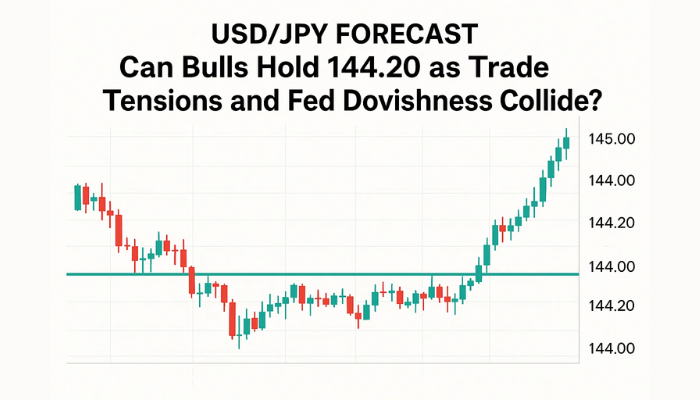USDJPY Preparing to Bounce This Week After the Final Japan GDP Report
Last week USDJPY consolidated around the 150 level, forming a doji candlestick which signals a bounce this week after the retreat previously

Last week USDJPY consolidated around the 150 level, forming a doji candlestick which signals a bounce this week after the retreat in the previous week.

The USD/JPY currency pair, which had experienced a robust two-month rally of more than 17 cents, recently faced a partial reversal. This decline was driven by heightened volatility and bearish pressure over the past two weeks. As market sentiment shifted, the selloff intensified, causing the pair to lose 7 cents in the final week of November and drop below the 149 mark.
USD/JPY Chart Weekly – The 20 MSA Provided Support
Following this steep decline, the USD/JPY showed signs of stabilization and rebounded modestly, consolidating around the 150 level. This movement formed a doji candlestick on the weekly chart, often interpreted as a signal of potential recovery. However, the recovery momentum was tempered by weaker U.S. employment data earlier in the week, even as a stronger-than-expected Non-Farm Payrolls (NFP) report on Friday offered some support, preventing a sharper decline.
Despite a series of positive U.S. economic reports, the dollar struggled to regain significant strength. Markets have already factored in three 25 basis point rate cuts for 2025, contributing to the subdued performance of the USD. Looking ahead, while there remains an expectation of at least two rate hikes by the end of the next year, the probability of a December rate hike dropped from 58% to less than 40%.
On the Japanese yen’s side, reduced expectations for imminent U.S. rate hikes provided some relief, partially offsetting its earlier weakness. As a result, the USD/JPY pair entered a phase of relative stability, reflecting the complex interplay of economic data and shifting central bank expectations. Early today we also had the Final GDP reading from Japan for Q3 which was revized higher, while the GDP price index was revised lower.
Japan Final Q3 GDP Report
Headline GDP Figures
- Revised Q3 GDP Growth (q/q):
- Final reading: +0.3% (in line with expectations).
- Preliminary reading: +0.2%, reflecting a slight upward revision.
Private Consumption
- Revised Reading (q/q): +0.7%, slightly below the preliminary figure of +0.9%.
- Private consumption remains a key driver of growth but shows signs of modest slowing compared to earlier estimates.
GDP Price Index
- Revised Index: +2.4%, marginally below the 2.5% expected.
- Previous Index: +2.6%, indicating a continued moderation in price pressures.
Capital Expenditure (Capex)
- Revised Capex (q/q): -0.1%, a slight improvement from the preliminary figure of -0.2%.
- Indicates lingering caution among businesses in expanding investments despite favorable conditions.
Domestic Demand
- Revised Domestic Demand (q/q): +0.5%, slightly lower than the preliminary reading of +0.6%.
- Domestic demand contributed positively to overall growth but underscores some softening momentum.
Key Takeaways
- Economic Growth: Japan’s economy expanded modestly in Q3, with the upward revision to GDP reflecting incremental improvements in investment and consumption.
- Private Sector Dynamics: While private consumption grew, the downward revision signals weaker-than-expected household spending.
- Inflation Trends: The GDP price index revision indicates easing inflationary pressures, aligning with broader trends of subdued price growth in Japan.
- Investment Hesitancy: Capex remains in negative territory, reflecting cautious sentiment among businesses amid global uncertainties.
- Domestic Demand: Positive but slowing, suggesting challenges in sustaining growth momentum without stronger external or domestic catalysts.
Japan’s revised Q3 GDP report reflects a modest economic recovery, with growth supported by domestic demand and private consumption, albeit at a slower pace than initially estimated. While inflationary pressures continue to ease, the slight improvement in capital expenditure highlights cautious optimism among businesses. However, lingering weaknesses in private spending and investment suggest that Japan’s growth remains fragile, dependent on both external stability and effective domestic policy measures.
USD/JPY Live Chart
- Check out our free forex signals
- Follow the top economic events on FX Leaders economic calendar
- Trade better, discover more Forex Trading Strategies
- Open a FREE Trading Account



